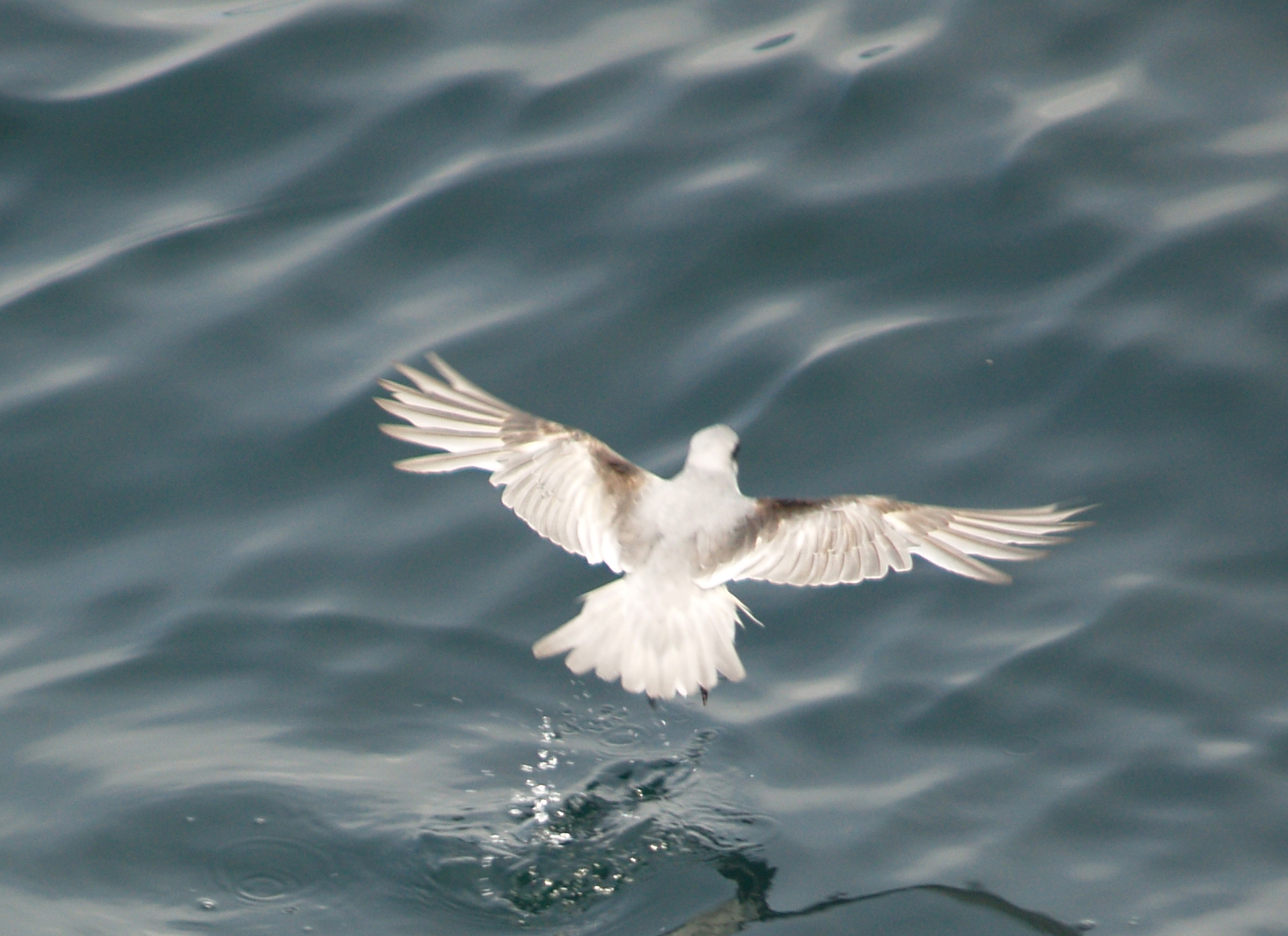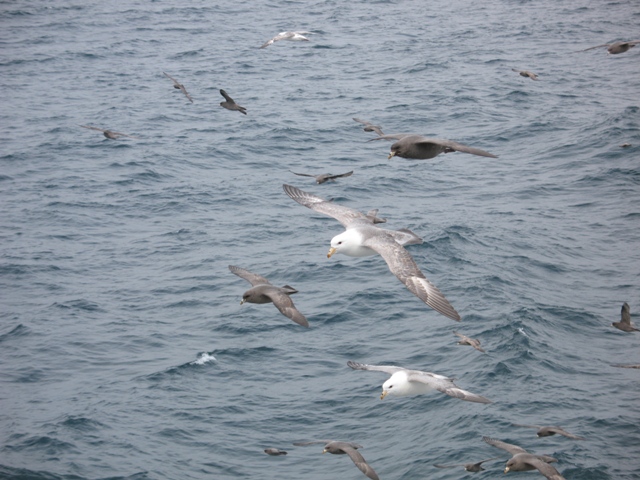
by Nate Jones, Vertebrate Ecology Lab
June 5, 2008: I am finally out counting seabirds! Fulmars flap, storm petrels flit, and murres paddle along the still ocean waters. Perhaps the Bering Sea is finally settling down for some summer sleep. At times the surface is so smooth I can see the silhouette of my own shape, dancing in reflection on its silky surface. The days are long, though the light is dimmed by the heavy, intermittent fog and constant overcast. It is difficult to judge distances in this lighting. Our world spans a continuum between black and white, but we see little color. Everything is some shade of gray; the sky, the horizon, the water. From our perch, 40 feet high up on the bridge of the boat, the whole experience is quite surreal. Sometimes the view seems unchanging, and it is difficult to tell if we’re even moving at all!

Luckily, there are birds to punctuate this monotonous tranquility! So far we’ve seen fulmars, kittiwakes, puffins, murres, storm petrels, and shearwaters. Fulmars and shearwaters are closely related, considered to be in the same taxonomic family. These birds travel great distances at sea – thousands of miles – to follow the seasons and stay near productive ocean hotspots. They race past me on strong steady wings, arcing and diving if it’s windy, brushing within inches of the wavelets and then climbing abruptly above the ship. When it’s calm they speed along with stiff, powerful wingbeats.

We see tremendous color variation in fulmars. Some are almost white, others a near uniform dark brown, and many more are some mix in between, splotched and peppered with contrasting feathers.There are two species of shearwaters that we’ve seen, and they are extremely difficult to tell apart from a distance. Most are Short-tailed Shearwaters, but some are Sooty Shearwaters. Nearly identical in size and color, they are best differentiated through experience, after watching their flight patterns and studying their body proportions and subtle color shadings in all types of lighting. These species are some of the champion migrants. Just like human “snowbird” migrants, the shearwaters move to follow the summers, traveling from the southern hemisphere summer (Dec – Feb), to the northern summer (Jun-Aug), and back again.
They nest in burrows on rainy, isolated islands in the southern hemisphere near New Zealand and Australia, but fly all the way to the North Pacific and Bering Seas to feed during our productive northern summer months. That’s a roundtrip of about 12,000 miles! Every year, millions of shearwaters make this journey. Shearwaters can live as long as 20-30 years. Think about that. An older shearwater might have traveled over 300,000 miles in migration during its lifetime. That’s about the distance to the moon!!

The kittiwakes seem to float along in airy grace. The ratio of their body weight to wing surface area is fairly low compared to that of puffins and murres, which must flap their stiff wings furiously to stay airborne. We haven’t seen an albatross yet, but you can find pictures, and learn much more about all these types of birds, at the very informative site that John Piatt helped put together at USGS:
http://www.absc.usgs.gov/research/seabird_foragefish/seabirds/index.html
If you follow that link for a look, do you notice any similarities among all those seabirds? One thing that I find interesting is that most of these birds have similar coloration. They are all basically some combination of white, black, gray, and brown! Also, many of them tend to be lighter on the belly and darker on the back. Why might this be? What sorts of environmental or behavioral factors might exert an influence on the selection of one coloration over another? How would these forces operate?

Actually, these types of questions are impossible to answer with certainty. To make any attempt at it we’d probably want to manipulate the colors of the birds, or the temperatures of the water or the air, or the strength and direction of light sources, or add or remove predators or prey from their world. These things would obviously be very difficult, undesirable, or just plain impossible to do in the open ocean! As a result, much of what scientists know about seabirds is based on observations, comparisons, and inferences, instead of on data gathered through manipulative experiments. In fact, the scientific study of just about anything in the marine environment is filled with logistical challenges.
Just think about how remote the open ocean is; we humans must take a shipload of food, water, and clothing, just to survive there for any length of time. And, of course your camera or cell phone wouldn’t react well to a dunk in salty water! It usually takes a lot of time and expensive equipment to study the oceans. They are certainly a wilderness of sorts, and some of the last frontiers on earth. This is why there is still so much to learn in marine science, and that makes it a very exciting field to get into! Marine scientists must be clever and inventive sometimes to overcome the challenges presented by the environment and collect the data they need.

